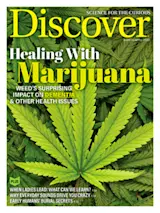The middle-aged woman on the gurney trembled, stopped, and then shook again. It seemed an internal alarm wouldn’t shut off.
“I’m pretty fit,” Kelly half-apologized through chattering teeth. “Even followed guidelines and had my pre-birthday colonoscopy today. But it seems I can’t stop shaking.”
The nurse’s triage note read, “Shakes, chills, nausea, and palpitations while on a plane today.” Beautifully nonspecific, I thought.
Kelly’s heart rate clocked in at 120 beats per minute, which is abnormally fast, but her blood pressure and temperature were OK. As for her medical history, she took only a daily statin for cholesterol. Indeed, she was in good shape.
“What did you eat on the plane?” I asked.
Rule No. 1 to my medical students is: “Never, ever ask what they ate.” Humans have always just eaten something, which makes the last meal too inviting a suspect for new symptoms. One long-ago mishap was to ...















